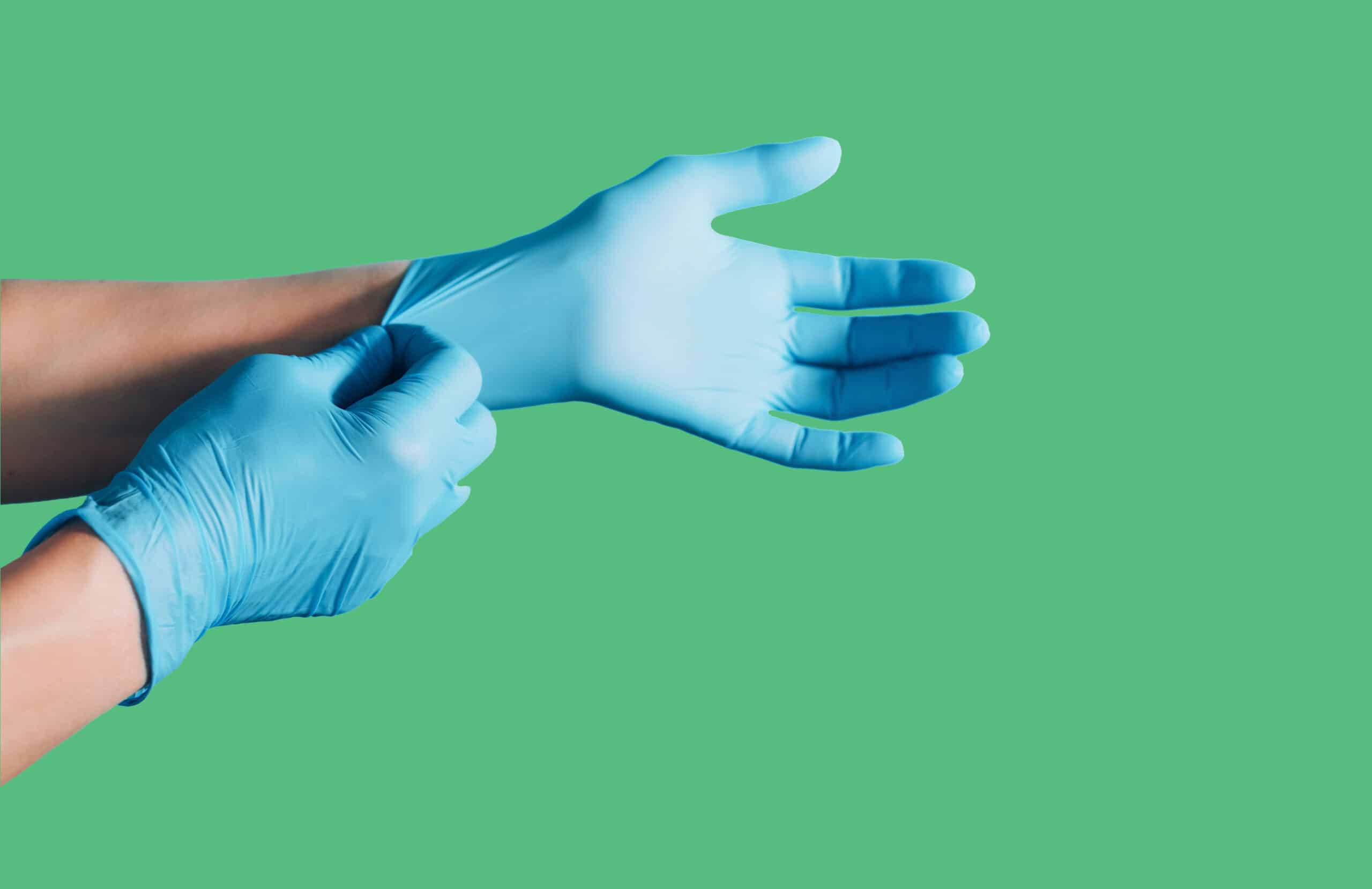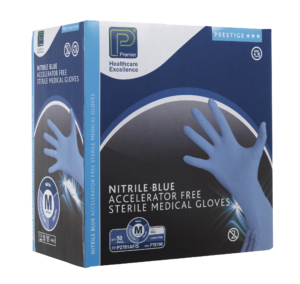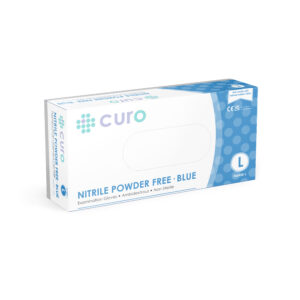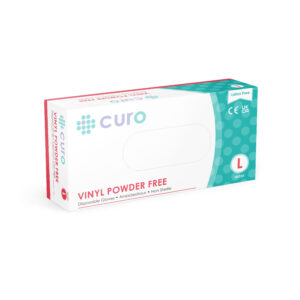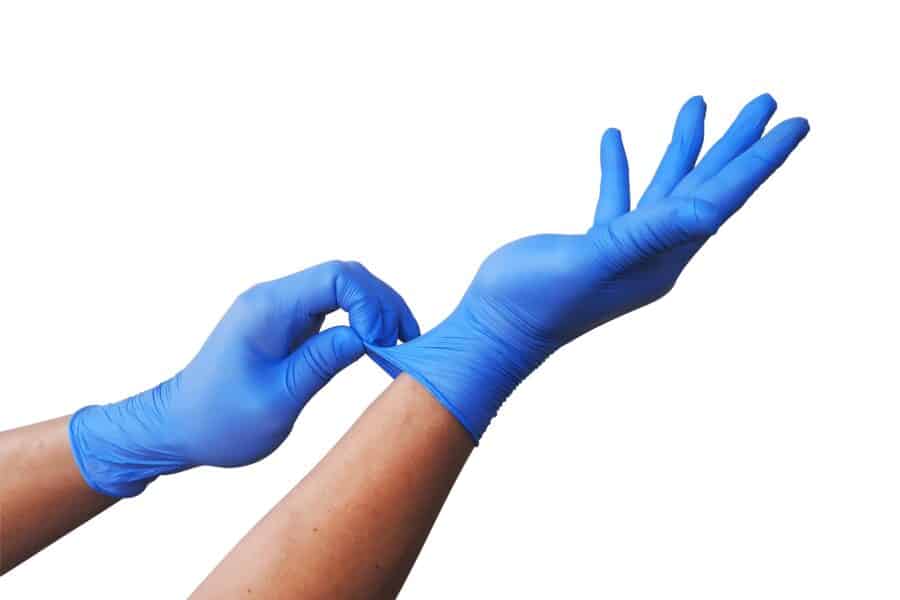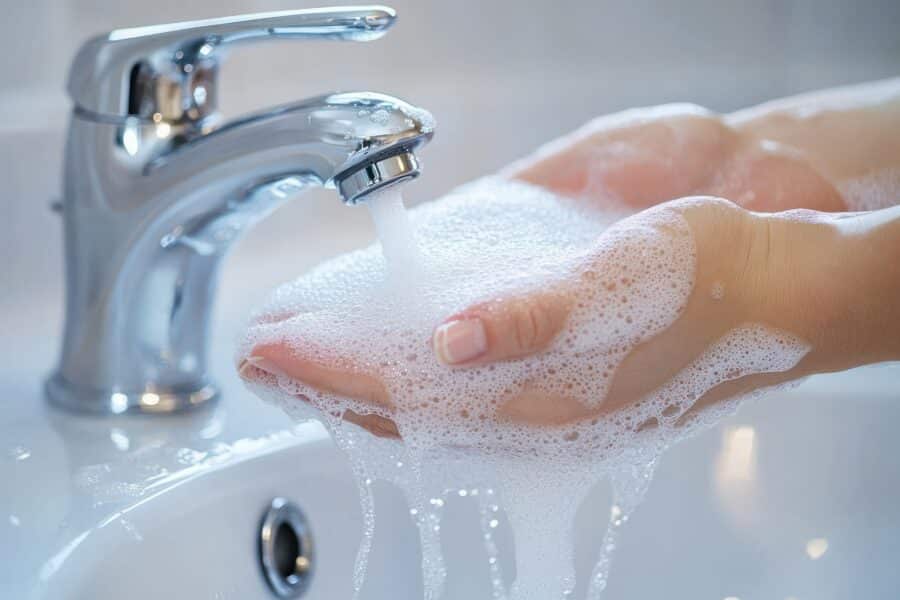Choosing the Right Disposable Gloves
Making informed decisions on appropriate disposable gloves is always about matching the level of risk involved in the task to suitable products.
Types of Gloves Used in Healthcare
Nurses, caregivers, and other healthcare workers typically use examination gloves. When deciding between latex, vinyl, and nitrile, consider the level of risk associated with the task. These gloves are required for procedures where there is a risk of cross-infection between patients and staff. Further risk assessment should guide your selection.
High-Risk vs. Low-Risk Situations
Latex and nitrile disposable gloves are commonly used in high-risk situations involving blood, bodily fluids, or patients with infectious diseases. Both latex and vinyl work for low-risk, general procedures such as non-invasive physical exams. However, due to the rise in latex allergies, many healthcare establishments now operate as ‘latex free’ environments. They choose non-latex, high-protection alternatives like nitrile and synthetic options.
What Are Acceptable Quality Levels (AQL) And Why Are They Important?
It is one of the responsibilities of European standards makers to decide what percentage of defects is permissible in any market. European Standards state that medical examination gloves, for example, shall have an acceptable quality level or AQL of 1.5 because they feel that the internationally accepted AQL of 2.5 does not provide sufficient protection for European Healthcare Workers.
This means that it is acceptable for up to 1.5% of all disposable gloves that are made to contain a hole or defect. Therefore, a lower AQL number means that there is less risk of encountering a defect, and therefore a lower risk of transmitting infection. However, it also means that higher levels of inspection are required, leading to increased prices.
Sterile vs. Non-Sterile Gloves
When to Use Sterile Gloves
Use sterile gloves primarily for surgical purposes. These gloves must meet stricter standards based on the AQL for pinholes. Sterile gloves are more expensive due to the rigorous testing and quality requirements.
Sterile Nitrile Examination Gloves are designed for medical procedures, offering a high quality and dependable sterile latex free glove, they are compliant with Class1 Sterile Medical Devices Directive 93/42/EEC (2007/47/EC) and its series of European Standards EN455 parts 1, 2, 3 and 4. They are manufactured in accordance with European PPE Directive 89/686/EEC, standards EN420 and EN374.
Able’s Nitrile Sterile Medical Gloves are a popular choice among our clients
When To Choose Sterile
Examples of procedures which require a sterile field and high-barrier protection include:
- Lumbar punctures
- Liver biopsies
- Clinical care to surgical wounds / drain sites
- Procedures for neutropenic patients
- Insertion of urinary catheters
- Vaginal examination in obstetrics
When Non-Sterile Gloves Are Appropriate
Non-sterile gloves have a slightly lower AQL (1.0) compared to sterile gloves (AQL 1.5). Studies show no increased risk of infection in non-surgical procedures when using non-sterile gloves. Therefore, most healthcare workers choose non-sterile gloves for non-surgical tasks.
Able’s in-house Curo brand of gloves offer superior quality compared to many nonsterile gloves
Synthetic examination gloves also offer a high level of protection. They are softer and more flexible than standard vinyl and offer a more comfortable fit. They are a lower cost option than nitrile and can also be used where there is a risk of contact with blood.
When To Wear Non-Sterile ‘High Protection’ Gloves
- If there is a risk of contact with blood,
- Procedures involving high-risk of exposure to Blood Borne Viruses and where high barrier protection is needed
- Handling cytotoxic material
- Handling disinfectants
- Venepuncture / cannulisation
- Vaginal examination
- Basic care and specimen collection procedures on patients known or suspected to be high risk of Blood Borne Viruses
- Non-surgical dentistry / podiatry
- Handling dirty/used instruments
Non-Sterile Disposable Gloves Which Provide Lower Levels of Protection
Medical grade vinyl examination gloves with an AQL 1.5 offer a lower level of protection and a good fit. However, those who choose vinyl as an acceptable alternative to nitrile are putting staff and patients at risk when dealing with blood, as vinyl tears more easily, and therefore increases the risk of cross contamination. Vinyl is suitable for low level risk procedures in nursing home environments.
Our Curo Vinyl Powder free are our best value and bestselling gloves
When To Wear ‘Low Level Protection’
Gloves are suitable for low-risk procedures, not involving blood, including tasks where there is a low-risk of contamination, non-invasive clinical care, or environmental cleaning including:
- Oral care
- Emptying catheter drainage bags
- Emptying urinals / bedpans and suction jars
- Handling low-risk specimens
- Clinical cleaning
- Dressing wounds when contact with blood / body fluids is unlikely e.g. gastrostomy dressings
- Endotracheal suction
- Applying creams
- Touching patients with unknown skin rash / scabies / shingles
- Making beds / changing clothing of patients in isolation then a suitable quality vinyl is acceptable.
Are Gloves Always Necessary?
Gloves are NOT required for procedures where there is minimal risk of cross-infection between patients and staff, for example:
- Basic care procedures without contact with blood or body fluids
- Transferring food from food trolleys to patient bedside
- Making uncontaminated beds/changing or removing patients’ uncontaminated clothing
- Taking recordings (BP, temperature, pulse)
- Closed endotracheal suction
However, gloves are always a great precaution in all situations in care homes. Learn about what could be lurking on your hands and how to properly sanitise them here.
Able work in partnership with the leading suppliers of medical examination gloves to ensure that you have the best range of high-quality gloves available for your needs.
All our gloves are continually tested to maintain quality and are manufactured to BS EN 455 to comply with all Health and Safety requirements.
This allows us to offer you both the best advice and gloves to suit your individual application so that you can provide your staff with the optimum protection against all types of infection. If you’re interested in learning more about when to use Nitrile versus Vinyl, click here.
Able work in partnership with the leading suppliers of medical examination gloves to ensure that you have the best range of high-quality gloves available for your needs.
All our gloves are continually tested to maintain quality and are manufactured to BS EN 455 to comply with all Health and Safety requirements.
To learn more about our Curo brand gloves and competitive pricing, book a free consultation through the form below.
Disposable Gloves FAQ’s
When should I use nitrile instead of vinyl?
For high-risk tasks or contact with blood/chemicals—nitrile offers stronger protection.
Are latex gloves still recommended in care homes?
Often avoided due to allergies; many sites run latex-free and use nitrile or synthetics.
What does AQL mean for gloves?
It’s the defect rate threshold; lower AQL = fewer pinholes and higher protection.
Do I need sterile or non-sterile gloves?
Sterile for surgical/aseptic procedures; non-sterile for routine clinical tasks.
What are “high-protection” non-sterile uses?
Blood exposure, BBV risk, disinfectants, venepuncture, and similar procedures.
When are vinyl gloves acceptable?
Low-risk, short tasks without blood exposure—e.g., basic care or light cleaning.
Are gloves always necessary?
Not for minimal-risk tasks without fluids—but they’re a smart precaution in care homes.
